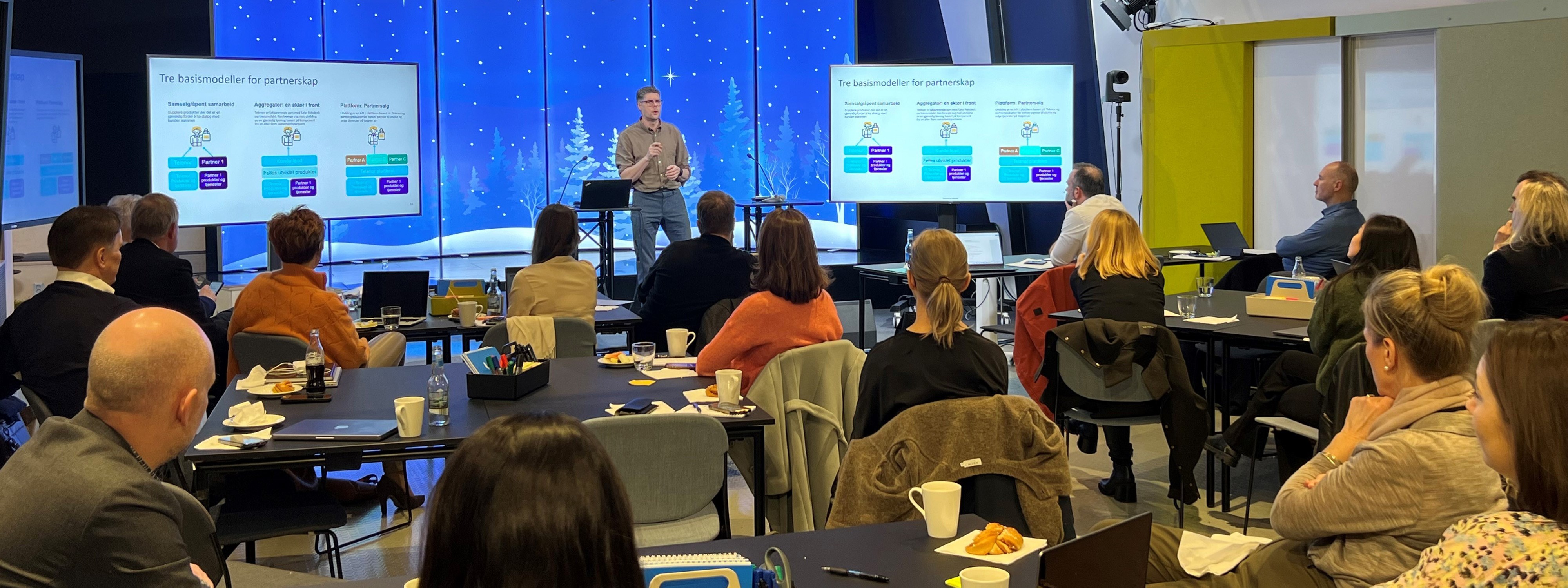
Partnership as Strategy
In an era of innovation and digital transformation, the DIG Corporate Workshop at Telenor highlighted the importance of partnerships and alliances in navigating this transformation.
Conducted on 24 January, the event brought together DIG researchers and partners to explore the dynamics of strategic collaborations. The workshop, enriched by insights from research and real-world examples, provided a comprehensive view on the challenges and opportunities inherent in partnerships and alliances.
Innovation and digitalization imply that the capabilities firms need to compete change faster and becomes harder to predict. For example, who knows how the surge in business model innovation that Generative AI-will unleash will affect the need for, and value of, different capabilities. This requires organizations to be both faster and more flexible.
To respond to this, partnerships and alliances have become increasingly relevant and popular tools. At the DIG Corporate Workshop at Telenor, DIG partners gathered to learn more, discuss the topic, and share experiences. Professors Lasse Lien and Bram Timmermans from NHH, along with VP Frank Elter from Telenor/NHH, presented the latest research on the topic.

No safe bet
While partnerships and alliances are increasingly popular, they are by no means a safe bet. Around 60% fail to deliver what was expected by those involved. The failure rate drops fast as firms build experience and capabilities in working through partnerships. As such, partnering capabilities can be thought of as a meta-capability that provides better access to the capabilities of others.
Recent data collected from 885 Norwegian CEOs shows that they believe that partnerships will play an increasingly important role in terms of how they compete. 66% have partnerships as an explicit part of their strategy, 62% of them expect partnerships to become more important, and 47% expect to become more dependent on their partners.
While they expect to use it across a wide range of areas for a wide range of purposes, they expect it to be of particular importance for innovation.
Frank Elter from Telenor pointed out how a partnership and partnership roles must be matched to the value creation logic at play, and the importance of business model compatibility between those involved.

Partners shared experiences
Several DIG partners also shared their experiences and insights. Henning Hauso, Senior Advisor in the Department of Digitalization and Innovation in Bergen Municipality mentioned that the need for expertise and lack of resources is a primary motivation for collaboration in the public sector and emphasized the important role of research in supporting this.
Klaus Martin Sørland from Telenor pointed out that a partnership must provide more value than working separately, and there must be a shared trust and willingness to recommend each other. He also emphasized the benefits of starting a partnership with a specific customer case with a clear “job to be done” and build from the relationship from this basis.
Simen Aasen Engebretsen, Innovation Manager, and Linda Engen, Product Manager, from Gjensidige gave interesting case example of a partnership between a large, established firm and a small entrepreneurial player. They described a journey with ups and downs that required new ways of working internally, and clear communication of expectations both ways in the partnership.
Discussions among participants across tables and with an expert panel added many additional insights both in terms of what we know and what we would like to know - about using partnerships as a strategy.
